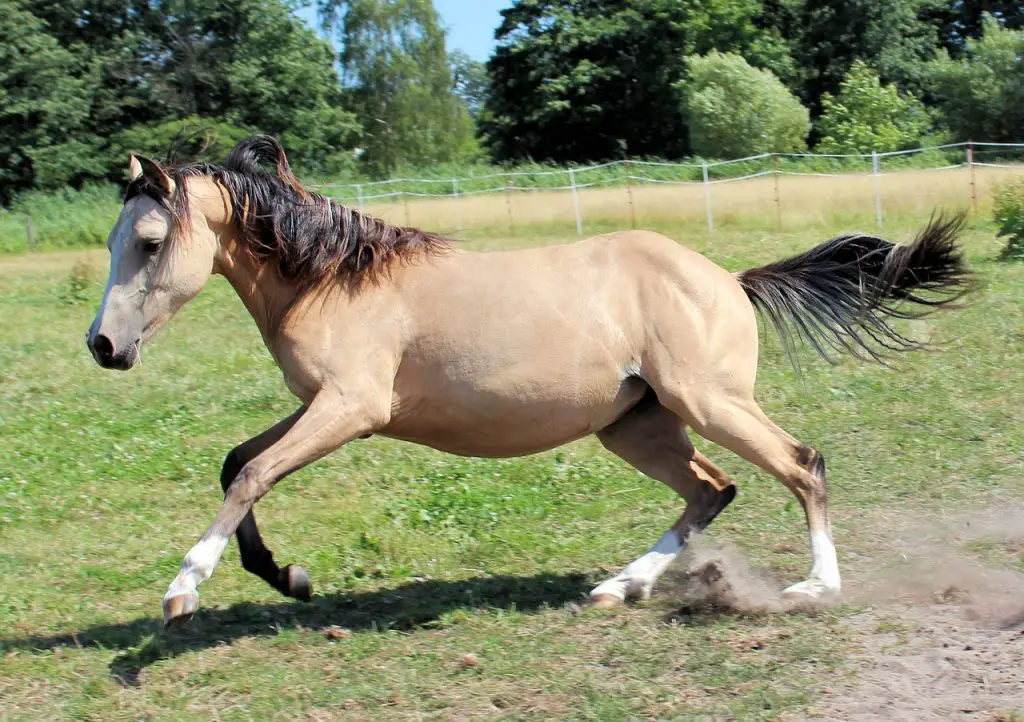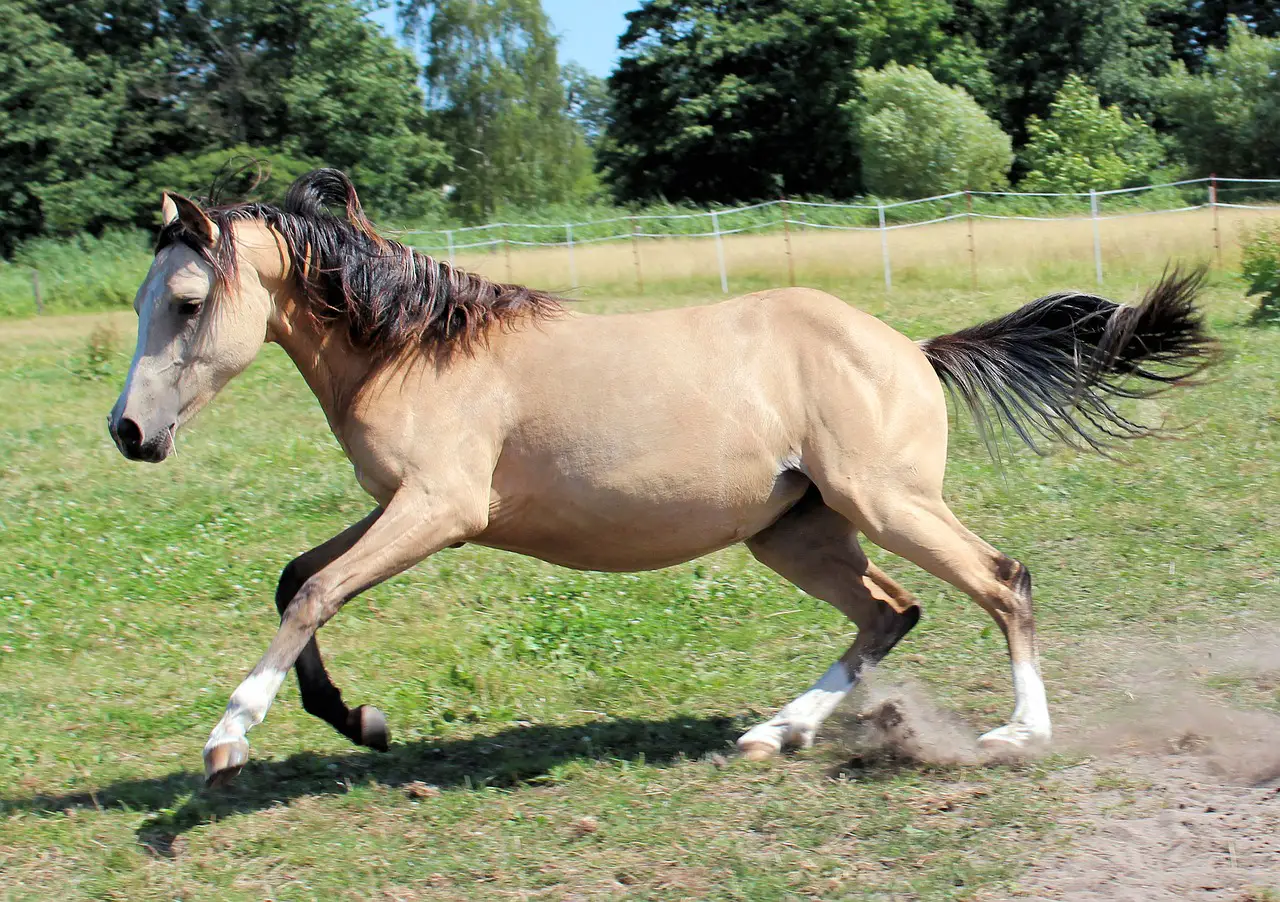Last Updated on February 21, 2022 by Allison Price
What is the first thing that comes to your mind when you think of a wild horse? Our minds tend to think of Spirit, Stallion, or the Cimarron horse. Or maybe we think of a horse with a long tail and flowing mane. Here’s everything you need to know about this beautiful dun horse color.
Dun Coloring
A dun horse is rated a solid 10, for being unique and flashy. These horses are identifiable by their primitive markings, such as dark or black-striped legs, a dorsal line, black edging around ears, a shadow like a mask and stripes on the withers. Their dark edging is usually visible in the mane and tail.
There’s a red and a traditional dun horse.
Red duns have sorrel as their base color and don’t have black points. They still retain the characteristic of striping.
Classic duns have a bay-colored base coat. These horses can be tan from pale to dark brown. All black points are present in classic duns.
Genetic Makeup
From where does the stunning dun color originate? This is the article about Cremellos. It will make it easy to remember this brief overview of phenotyping, genetics, and other aspects.
A dominant dilution gene modifier is responsible for the dun coloring. This makes the appearance or phenotype of the coat appear diluted. This gene is only found in horses with red or black base coat colors. From where do sorrel, bay and black base coat colors originate? A red base is used for sorrel, while a black base makes bay colors.
To determine if a horse is homozygous for this gene, a dune horse can be tested. The foal will be dun if the horse is positive.

Colored breeds
You might be tempted to think of a wild horse when you see a dun horse. Most of the Przewalski horses, wild Asian horses, are dun. American Quarter Horses and Highland Ponies are all common dun colors. (Close to Spirit, he’s actually a dunskin.
Is Dun and Buckskin one thing?
Buckskin coloring and dun are not the same thing. Buckskin is a result of a genetic mutation. However, it can be produced using a single shot from the cream dilution gene to a bay base color. Palamino color is also caused by the cream gene. Buckskin can have a dark mane and tail, as well as a dorsal streak. To be truly dun, however, they must have all of these characteristics as well as the dorsal stripes.
It is amazing to think that horses can have different colors due to a single genetic mutation. A small change can make a big difference in the appearance of a horse. It’s easy to fall in love with a Dun Horse!



